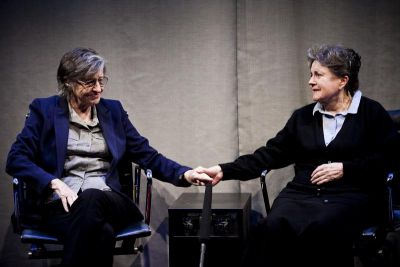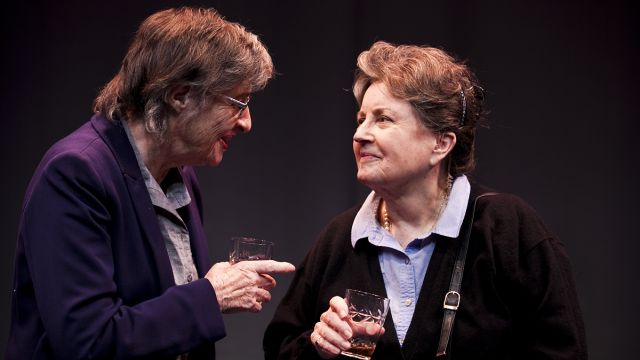The Shoe-Horn Sonata
Ensemble’s reprise of this very special Australian play - and the very special actors who perform it – will be well received by HSC English teachers and students. It has been ‘on the list’ for some years, and seeing it on the stage not only brings Bridie and Sheila to life, but makes the story they tell through John Misto’s carefully researched and evocative script even more poignant for those who study it.
Through the experiences of two survivors of the Japanese prisoner of war camps, this play tells not only of courage and stoicism in the face of unbelievably cruel treatment and monstrous conditions, it exposes how successive British and Australian governments have ‘covered up’ the deaths of so many innocent women and children at the hands of enemy forces – and still do not really acknowledge their sacrifice.
John Misto tells the story of these women through Bridie Cartwright and Sheila Richards, characters he has created based on the memories of some of the survivors of the camps. Misto: “although the characters of Bridie and Sheila are fictional, every incident they describe is true”.

Much-loved theatre ‘treasures’ Sandra Bates and Lorraine Bayly return to the stage to reprise their 1995 depiction of these two women.
Bates plays Bridie, an Australian Army nurse who was serving in Singapore. Bayly plays Sheila, who was a fifteen-year-old English school girl whose father worked for the British government. Both were evacuated after the fall of Singapore in 1942 on over-loaded boats that were sunk by Japanese warships. Miraculously they survived drowning only to find themselves imprisoned for over three years …1,287 days.
Fifty years later, the women are brought together to take part in a television program based on their experiences. Through this Misto exposes not only the horrendous conditions and barbaric treatment by their captors, but the strength and indomitable spirit of the women – and the callous neglect of them by government officials during and after the war.
Bates and Bayly bring a wealth of theatrical experience and personal perception to their recreation of the characters. Bates captures the underling steeliness of Bridie Cartwright in squared shoulders and a no-nonsense attitude. It is easy to see in her depiction the inner stamina and determination with which Bridie faced the ordeals of imprisonment – and led her to look after Sheila and protect her.
Bayly portrays the less confident Sheila with hesitant reactions and an underlying reluctance, the reason for which becomes movingly clear as the women re-connect outside the interview situation. Her Sheila is a softer foil to Bridie’s self-assurance, but nonetheless there is strength and tenacity beneath her apparent unease.
 Having directed this play myself, I know it well, but each time I see it I am still moved by the characters and the images that are an intricate part of the play and the history that it exposes. Though the set appears to be simple, it must allow for movement between a studio and hotel rooms – and provide a screen for multiple projections that bring to sombre life the conditions of the camps – and those who survived. Designer Anna Gardiner, has accomplished this on the restricted stage of the Ensemble and Sandra Bates, as director, has managed the many scene changes most effectively.
Having directed this play myself, I know it well, but each time I see it I am still moved by the characters and the images that are an intricate part of the play and the history that it exposes. Though the set appears to be simple, it must allow for movement between a studio and hotel rooms – and provide a screen for multiple projections that bring to sombre life the conditions of the camps – and those who survived. Designer Anna Gardiner, has accomplished this on the restricted stage of the Ensemble and Sandra Bates, as director, has managed the many scene changes most effectively.
This is an important Australian play that pulls no punches – but does it in a way that is theatrically and historically compelling. That it has been reprised by the company and performers who had the courage to bring it to the stage twenty years ago, is a credit to the two wonderful actors and the story and characters John Misto built from the memories of the survivors…
“… I spoke with many women who had been imprisoned … on sunny afternoons they poured tea and told me about bombings, shipwreck, massacres, torture, starvation, disesses, digging graves … I do not have the power to build a memorial (to them). So I wrote a play instead.” (Misto)
Carol Wimmer
images: Sandra Bates and Lorraine Bayly in The Shoe-Horn Sonata. Photographer: Katy Green Loughrey.
Subscribe to our E-Newsletter, buy our latest print edition or find a Performing Arts book at Book Nook.

